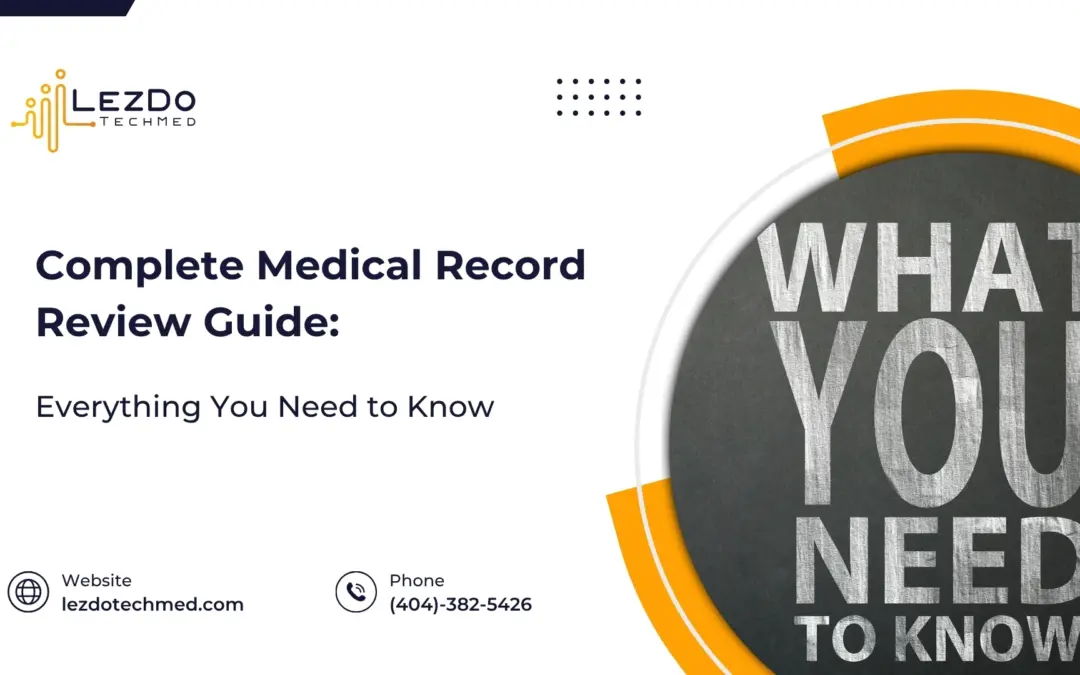Familiar with sorting and indexing, right? Still using traditional methods to manage medical files? Then you are wasting your valuable time. Learn smart techniques of sorting and indexing for life care planners to efficiently organize, access, and manage documents. With the right approach, you can cut down on hours of manual effort and get straight to what’s important. No more delays, just clear and organized records at your fingertips.
The Role of Sorting in Case Management
Life care planners often manage hundreds or thousands of documents for each case. It includes medical records, therapy reports, prescriptions, lab results, provider notes, and more. Sorting records organizes all this information into meaningful categories such as provider, diagnosis date, and treatment type. This structure helps identify patterns, gaps in care, and timelines.
Sorting by date helps you clearly trace the medical journey:
- When care started
- What treatments were done
- Where delays or complications occurred
Sorting by type or category shows you:
- How different treatments were managed
- Whether any care area is missing or incomplete
- If there are repeated interventions that need to be addressed
It also reduces the risk of including the same document twice, missing critical reports, and overlooking updates.
Smart Way to Organize Case Files by Sorting
- Always sort documents chronologically to maintain a clear timeline.
- Use subcategories to separate records by specialty or type of service.
- Group similar documents together for easier review and comparison.
- Keep the latest and most relevant files easily accessible at the top or front.
- Use consistent formatting and naming to make sorting automatic and intuitive.
- Avoid mixing document types within the same folder to reduce confusion.
Indexing Techniques for Medical Documentation
Indexing is the strategic labeling of documents to ensure quick access, seamless review, and efficient cross-referencing. It transforms overwhelming piles of medical records into a clear, navigable structure. Effective techniques include:
Use a Consistent File Naming Format
- Stick to a clear structure that includes the date, type of document, and provider
Apply Metadata or Tags (if using digital tools)
- Use keywords like diagnosis, procedure, or care provider
- Make files easily searchable in case management systems or folders
Create a Master Index
Use a Word document, Excel sheet, or case management template to build it. Include key columns like:
- File Name
- Folder/Category
- Date
- Brief Description
- Notes
- Link or page number
This gives a quick overview and simplifies cross-referencing.
Build a Chronological Timeline
- Arrange records in the order events occurred
- Helps visualize medical history and treatment progression clearly
- Useful for forecasting future care and identifying patterns or complications
How to Get Better Results?
- Review and update the index regularly during the planning process
- Use consistent labels to keep records well-organized
- Keep digital files in structured folders or manual files with tabs
- Make the index accessible to your team or collaborators for better coordination
- Use color codes or filters to quickly highlight critical entries
These steps help organize the case more clearly, minimize cognitive load, and streamline the planning process.
Digital Tools for Sorting and Indexing
Choose the Right Tool for Your Workflow
- Select a platform that fits your needs, whether it’s a basic tool like Excel or Adobe Acrobat Pro, or a specialized solution like CaseMap or Chronology software.
- Consider whether you need features like cloud access, tagging, bookmarking, or collaboration.
Import and Organize Your Files
- Upload all documents into a centralized digital folder or case management system.
- Group the documents into main categories like surgeries, therapies, or test results to keep it straightforward.
Use Built-In Sorting Features
Most digital tools have sorting options to help you organize files by date, type, or provider. You can also use filters in tools like Excel to quickly find the information you need.
Add Hyperlinks, Bookmarks, or Tags
- Use bookmarks in PDFs or hyperlinks across spreadsheets to connect related documents.
- You can also add tags or notes like “follow-up” or “important” to highlight key documents.
Apply OCR (Optical Character Recognition)
- Run OCR on scanned files using tools like Adobe Acrobat Pro
- This makes even handwritten or scanned pages searchable by keywords.
Use Metadata and Custom Fields
Tools like CaseMap, Adobe Acrobat Pro, and some EHR systems let you add extra details to each file, such as patient ID, diagnosis, or treatment stage. You can then sort or filter documents based on this information. It makes it faster to group and find records, especially when handling more than one case.
Store in a Cloud-Based or Shared System
- Use secure platforms like Google Drive, Dropbox, or your firm’s Document Management System with controlled access.
- Make sure to follow HIPAA or relevant privacy regulations when handling medical records.
It enables real-time collaboration with legal teams and medical experts, even remotely.
Back Up and Maintain Your Digital Index
- Regularly back up your digital case folders and indexing logs.
- Update your tools and file structures as the case evolves.
It ensures nothing gets lost, and your work remains reliable throughout the process.
Simplify Your Workload: How Outsourcing Case Files Can Help
When paperwork increases, sorting and indexing for life care planners to make care plans becomes complicated. In such instances, outsourcing sorting and indexing tasks is a smart and strategic solution. By assigning this complex task to specialized medical record review companies, planners can get rid of time-consuming administrative tasks. It allows them to focus on critical analysis, cost projection, and client communication.
Outsourcing partners like LezDo TechMed integrate advanced technology like AI for document interpretation, timeline generation, and structured indexing systems. We are experienced in handling large volumes of medical data and maintaining HIPAA compliance. For busy planners handling multiple cases or tight deadlines, we deliver fast, accurate, and high-quality outputs tailored specifically to suit your needs. It saves you considerable time, improves accuracy, and enhances overall productivity.
To wrap up,
Sorting index medical records transform scattered records into a structured, readable format that makes your job easier and your plan stronger. It helps you think clearly, stay organized, and work more efficiently throughout the case. When done right, it becomes the foundation for a defensible, and high-quality life care plan that’s easy to build, explain, and present with confidence.
See Our Success Stories – Dive Into Our Case Studies.












